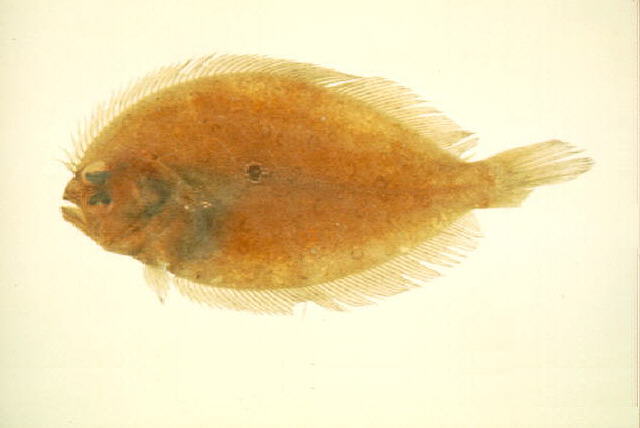| Paralichthyidae (Large-tooth flounders) |
| 35 cm SL (male/unsexed); max. reported age: 5 years |
|
demersal; marine; depth range 20 - 164 m |
| Western Pacific: South China Sea north to China and Japan (Ref. 9774); also from the Philippines (Ref. 4537). |
|
Dorsal spines (total): 0-0; Dorsal soft rays (total): 77-89; Anal spines: 0-0; Anal soft rays: 60-69; Vertebrae: 37-39. Body brownish, a distinct ocellus at junction of straight and curved parts of lateral line. Many dark rings scattered on body, many dark spots on median fins. A line connecting base of dorsal-fin ray and posterior nostril on eyed side passes behind posterior end of maxilla, or crosses its posterior part. Gill rakers moderately long and slender. Soft ray count of pectoral fin refers to that on ocular side (Ref 9774). |
| Inhabits mud and sand bottoms of shallow coasts or bays (Ref. 9774, 11230, 48637) to 164 m (Ref. 9494). Feeds on small benthic crustaceans and fishes (Ref. 9774). Also caught with small bottom trawls (Ref. 9774). Marketed mostly fresh (Ref. 9774). |
|
Least Concern (LC); Date assessed: 13 November 2019 Ref. (130435)
|
| harmless |
Source and more info: www.fishbase.org. For personal, classroom, and other internal use only. Not for publication.

